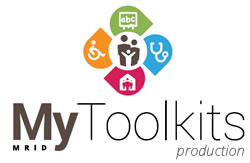Questionnaires and surveys involve gathering information about a specific topic from a defined group of people.
As a Co-Design tool, they offer a structured mechanism by which consumers and carers can inform health professionals about their needs and priorities and provide direction about how these might be addressed. Responses to questionnaires can create a bank of data that can shape service development as consumers’ priorities shift over time.
Questionnaires have been used by health services for many years. They may be used in different contexts, with individual families as part of a clinic consultation (i.e. to gather medical information on a case-by-case basis), or when surveying multiple families at once about their experience of health services (i.e. as an evaluation tool).
The process of using questionnaires as a Co-Design tool is different to traditional medical models. A Co-Design approach has consumer, carers and health professionals collectively determining when to conduct a survey, what questions need to be answered, how they will be asked and ultimately how this data will be analysed to inform service development.
A key feature of questionnaires and surveys is that information from many individual contributors is combined to establish a collective group response to particular questions or issues. It is critical that data properly collected from a representative sample of appropriate size, accurately recoded and securely stored.
Questionnaires and surveys may be especially useful as a Co-Design tool where the use of other tools have highlighted that particular issues need further investigation. In this way, informal feedback and anecdotal suggestions can be accurately defined and explored in some detail.
Getting it Right with Questionnaires and Surveys
In our experience, a Co-Design approach to developing and circulating questionnaires and surveys not only maximises consumer participation, but enhances the quality of collected data overall. Some factors to consider include:
- Development of the survey topic, aims and rationale should be guided by the interests of consumers, as gleaned from previous feedback and evaluation data.
- Where an organised consumer group exists, their ownership and endorsement of the survey will ensure that data collected is relevant to their priorities, increase consumer participation, and potentially allow distribution via their communication channels (such as email distribution lists).
- Consumers, carers and health professionals collaborate together (e.g. on a research committee) to design survey questions, format and delivery methods.
- Research academics may be consulted during the development and analysis phase, to guide research design methods and analysis of statistical and qualitative data.
- Ensure that surveys comply with ethical standards of affiliated health services and consumer groups.
- Training in research ethics and research methods may benefit the entire team or committee, including consumers, carers and clinicians alike.
- A liaison officer or research assistant should be nominated as a direct contact for questions related to the survey. A consumer or carer representative is well placed to fulfil this role, and financial remuneration should be provided.
- When consumers drive the process of survey implementation (e.g. by distributing, endorsing and explaining the survey), consumer participation is maximised.
- Consider the use of online survey systems, such as SurveyMonkey.com, which may minimise inconvenience to participants and data collectors alike.
- Ensure anonymity can be offered to participants.
- Where paper based questionnaires are used, a survey collection box at a group event or postage paid envelope can provide anonymity for those who desire it.
- Surveys should be written in clear language, avoiding the use of jargon.
- Include a variety of questions to encourage a range of responses and data:
- Direct (closed) questions are used to collect demographic data and specific information that does not require elaboration. E.g. “How many times have you visited our health service this year?”
- Open questions allow for extended, free flowing responses and ideas. E.g. “What aspects of our health service would you like to improve?”
- For pertinent issues of maximal interest, questions may be asked more than using different phrasing, to encourage further elaboration from participants.
- Qualitative scale questions rate responses according to a descriptive scale, often with a pictorial guide (e.g. Very unsatisfied, unsatisfied, neutral, satisfied or very satisfied).
- Numerical scale questions allow responses to be graded by number, most commonly 1-10. Ensure the direction of the scale is clear (e.g. 10 is ‘most satisfied’ and 1 is ‘least satisfied’).
- Ensure data is recorded and stored securely and that privacy is maintained at all times.
- Consumers, carers and professionals collaborate to analyse and report on data collected in a meaningful way.
- Clear language and graphical representations (charts, graphs, pictures etc) are helpful when reporting and summarising data.
- Consumers, carers and professionals collaborate to use the analysis in a meaningful way. What does this data mean? What action should be taken now? What issues require further investigation?
Other Informal Questionnaires and Surveys
In some situations, a more informal questionnaire may be appropriate. For example, following a small group meeting, feedback posters may be placed near the exits featuring simple questions such as “Which presentation was most useful today?” and “What would you like to discuss next time?” Participants are invited to respond by writing directly on to the poster (or by attaching Post It notes). For categorical questions, ticks/crosses may be used, or stickers can be placed beside your response of choice. These informal surveys are simple to prepare and simple for participants to complete. The disadvantage to this approach is that participants may be unable to respond anonymously, and may therefore be uncomfortable to write criticisms in front of other group members. For this reason, ensuring that participants have the opportunity to provide anonymous responses may lead to better quality information, and should be considered essential for research purposes.




